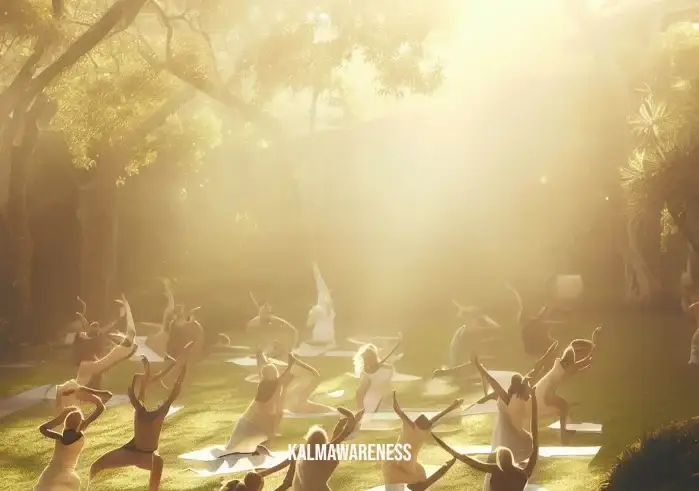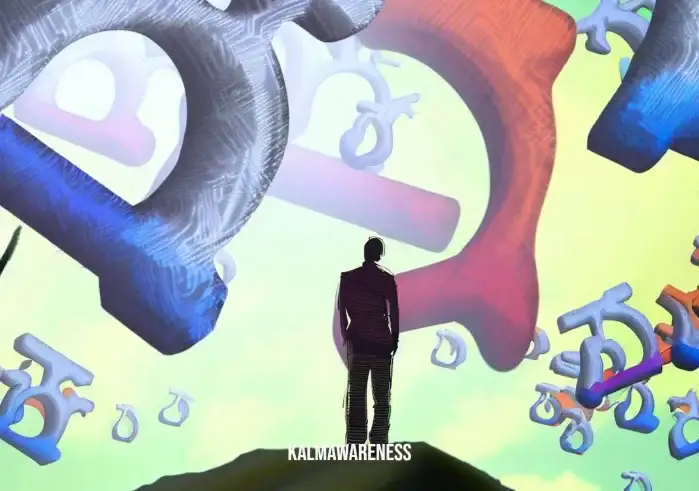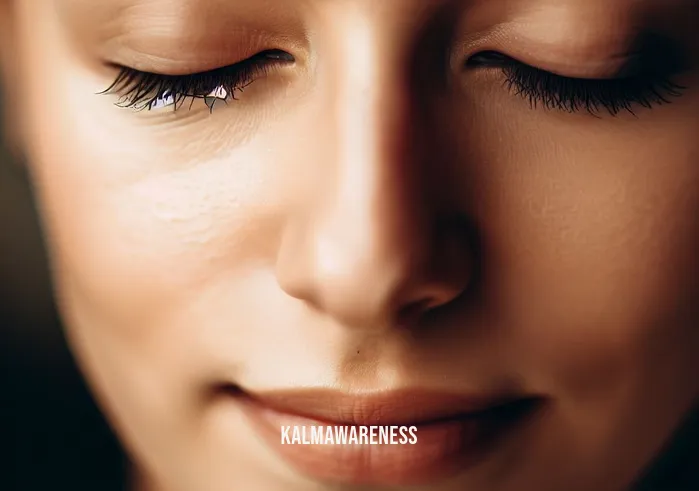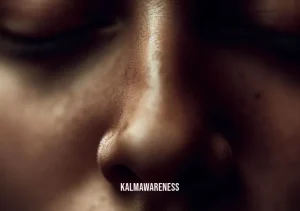Dancing Shiva Pose Yoga: Master the Graceful Flow
Meta Title: The Dancing Shiva Pose Yoga: Master the Graceful Flow
Are you ready to embark on a journey of graceful movement and spiritual connection? In this article, we will explore the enchanting world of the Dancing Shiva Pose in yoga. This captivating pose, also known as Natarajasana, allows you to embody the divine dance of Lord Shiva, the cosmic dancer, while nurturing your mind, body, and soul.
Let’s dive into the captivating realm of the Dancing Shiva Pose and discover its essence, benefits, and step-by-step instructions to help you experience the beauty of this yoga asana.
Table: Dancing Shiva Pose Yoga
| Description | Explanation |
|---|---|
| Pose Name | Dancing Shiva Pose Yoga |
| Original Name | Natarajasana |
| Difficulty Level | Intermediate |
| Pose Category | Balancing Yoga Poses |
| Exercise Duration | Beginners: 30 seconds – 1 minute Advanced: 1 – 2 minutes |
The Enchanting Dance: Unveiling the Dancing Shiva Pose
The Dancing Shiva Pose is an intermediate-level yoga asana that combines elements of balance, strength, and grace. This posture requires focus, flexibility, and a deep connection with your body and breath. As you enter the pose, imagine yourself embodying the divine dance of Lord Shiva, the cosmic dancer who symbolizes creation, destruction, and transformation.
Benefits of the Dancing Shiva Pose
The Dancing Shiva Pose offers a wide array of benefits for your physical, mental, and spiritual well-being. Let’s explore some of its remarkable advantages:
- Improves Balance and Coordination: As you strive to maintain balance in this pose, your core, leg muscles, and proprioceptive abilities are engaged, enhancing your overall balance and coordination.
- Strengthens the Legs and Core: The Dancing Shiva Pose targets the quadriceps, hamstrings, calves, and glutes, helping to strengthen and tone these muscle groups. Additionally, the pose activates and strengthens your core muscles, promoting stability and power.
- Enhances Concentration and Focus: This pose requires mental concentration and focus to maintain stability and fluidity. Regular practice of the Dancing Shiva Pose can improve your ability to concentrate, bringing a sense of calmness and clarity to your mind.
- Promotes Spinal Alignment and Flexibility: The pose involves a deep spinal extension, which helps to improve posture and release tension in the spine. It also stretches the shoulders, chest, and hip flexors, increasing overall flexibility.
- Invokes Inner Strength and Grace: Through the graceful movements of the Dancing Shiva Pose, you can tap into your inner strength and embody a sense of elegance, both on and off the mat. This pose encourages you to embrace your own unique flow and express yourself authentically.
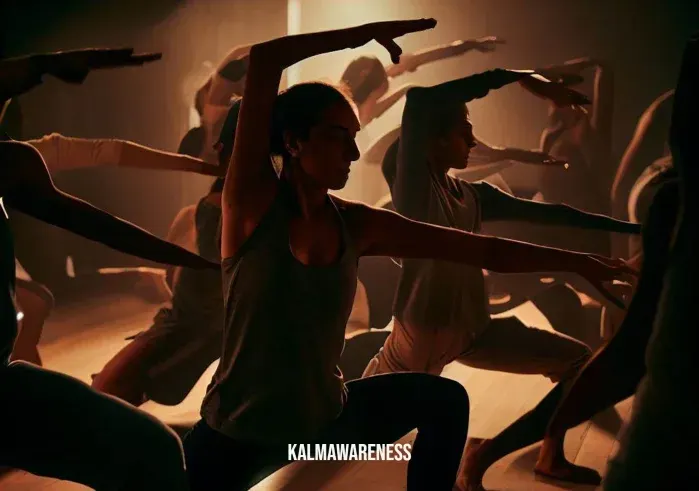
Unlock the Dance Within: Step-by-Step Guide to the Dancing Shiva Pose
Welcome back to the captivating world of the Dancing Shiva Pose Yoga! In this chapter, we will explore the step-by-step instructions to help you master this graceful and empowering yoga pose. As you delve deeper into your practice, you will uncover the incredible benefits of this pose, discover variations for different levels of experience, and gain insights into who can benefit from its practice.
Step-by-Step Guide to the Dancing Shiva Pose
- Begin in Mountain Pose: Stand tall with your feet hip-width apart, arms by your sides, and palms facing forward. Take a moment to ground yourself and connect with your breath.
- Shift your weight onto your left foot: Slowly lift your right foot off the ground and bring your right heel towards your right buttock.
- Reach back with your right hand: Reach your right hand behind you and grab hold of the inner arch of your right foot or ankle. Ensure that your thumb is facing upward.
- Extend your left arm forward: Extend your left arm forward, parallel to the ground, with your palm facing down. Find a focal point to assist with your balance.
- Engage your core and find your balance: With a gentle bend in your left knee, begin to tilt your torso forward while extending your right leg backward. Focus on maintaining a strong core and a steady breath as you find your balance.
- Lift your right leg and lean forward: Gradually lift your right leg higher while leaning your torso forward. Allow your body to naturally tilt forward, finding a position where you feel a gentle stretch in your right quadriceps.
- Find your expression: Once you have established a comfortable position, find your own unique expression of the Dancing Shiva Pose. You can choose to keep your left arm extended forward or raise it overhead, mirroring the flow of Lord Shiva’s cosmic dance.
- Hold the pose: Find a focal point to gaze at and hold the pose for the recommended duration based on your level of experience.
For beginners, aim to hold the pose for 30 seconds to 1 minute. As you progress and gain more confidence, you can gradually extend the duration to 1 to 2 minutes for advanced practitioners.
Discover the Benefits of the Dancing Shiva Pose
The Dancing Shiva Pose offers an array of benefits that encompass physical, mental, and emotional well-being. Let’s explore the remarkable advantages this pose brings:
- Strengthens and Tones the Leg Muscles: The Dancing Shiva Pose engages the quadriceps, hamstrings, calves, and glutes, promoting strength, stability, and toned muscles in the legs.
- Enhances Flexibility and Balance: Regular practice of this pose helps to improve overall flexibility in the legs, hips, and shoulders. It also enhances balance and coordination, as it requires focused concentration.
- Improves Concentration and Mindfulness: Holding the Dancing Shiva Pose demands mental focus and presence. As you align your body and mind, you cultivate greater concentration and mindfulness both on and off the mat.
- Promotes Spinal Health and Posture: The backbend element of the pose helps to improve spinal flexibility, alignment, and posture. It releases tension in the spine, promoting a healthy and supple back.
- Unleashes Inner Strength and Grace: Embodying the essence of Lord Shiva’s dance, this pose encourages you to tap into your inner strength, confidence, and grace. It fosters a sense of empowerment and self-expression.
Pose Variations for Different Levels of Experience
The Dancing Shiva Pose can be modified and adapted to suit practitioners of varying experience levels. Here are some variations to explore:
- Beginner Variation: If you are new to the pose, you can use a wall for support. Stand with your back against the wall, following the steps outlined above while keeping your extended leg lightly touching the wall for added stability.
- Advanced Variation: For more experienced practitioners, you can deepen the backbend by gently arching your upper back and reaching your extended arm and leg higher. Remember to listen to your body and progress gradually.
Who Should Avoid the Dancing Shiva Pose?
While the Dancing Shiva Pose offers numerous benefits, it is essential to consider certain precautions and contraindications. This pose is not recommended for individuals with the following conditions:
- High or low blood pressure
- Recent or chronic injuries to the legs, hips, or shoulders
- Vertigo or dizziness
- Migraine or severe headaches
If you have any pre-existing medical conditions or concerns, it is advisable to consult with a qualified yoga teacher or healthcare professional before attempting this pose.

Part 3: Unveiling the Mystique: The History and Spiritual Significance of the Dancing Shiva Pose Yoga
Welcome to the final part of our journey into the captivating realm of the Dancing Shiva Pose Yoga. In this chapter, we will delve into the rich history, spiritual significance, and practical tips to help you enhance your practice. Get ready to uncover the hidden gems surrounding this enchanting pose.
The History of the Dancing Shiva Pose
The Dancing Shiva Pose, also known as Natarajasana, has deep roots in ancient Indian mythology and art. It is inspired by Lord Shiva, one of the principal deities in Hinduism. Lord Shiva is often depicted as Nataraja, the cosmic dancer who performs the divine dance of creation, preservation, and destruction.
The pose embodies the dynamic and graceful movements of Lord Shiva, symbolizing the continuous cycle of life, the transcendence of duality, and the ultimate union of the individual soul (jivatma) with the universal consciousness (paramatma).
The Spiritual Significance of the Dancing Shiva Pose
Beyond its physical benefits, the Dancing Shiva Pose holds profound spiritual significance. By practicing this pose, you invite the qualities and energies represented by Lord Shiva into your own being. These include:
- Transformation: The pose symbolizes the transformative power of Lord Shiva’s dance, reminding us that change is a constant and essential aspect of life. It encourages us to embrace the process of growth and evolution on our spiritual journey.
- Balance: Lord Shiva’s dance represents the harmonious balance of opposing forces. Similarly, the pose invites us to find equilibrium between effort and surrender, strength and flexibility, stability and freedom.
- Stillness within Movement: Amidst the dynamic and flowing movements of the pose, there is an invitation to discover the profound stillness and peace that reside at the core of our being. It reminds us that we can remain calm and centered even amidst the chaos of life.
Tips for Getting the Most Out of the Dancing Shiva Pose
To enhance your practice and experience the full benefits of the Dancing Shiva Pose, consider the following tips:
- Warm-Up: Prioritize a thorough warm-up to prepare your body for the pose. Gentle stretches for the legs, hips, and shoulders, along with mindful breathing, can help to increase flexibility and circulation.
- Focus on Alignment: Pay attention to proper alignment in the pose. Engage your core, lengthen your spine, and avoid overarching the lower back. Maintain a soft and relaxed gaze to help steady your balance.
- Breathe Mindfully: Deep, conscious breathing is essential during the pose. Inhale deeply to expand your chest and create space, and exhale fully to release tension and find stability.
- Listen to Your Body: Honor your body’s limits and listen to its signals. Do not force yourself into the pose beyond your comfort zone. Embrace a gradual progression and allow your body to adapt over time.
Common Mistakes to Avoid
Avoid these common mistakes to ensure a safe and effective practice of the Dancing Shiva Pose:
- Compromised Balance: Neglecting to find a steady foundation and proper balance can compromise the integrity of the pose. Take your time to establish stability and ensure a solid base.
- Strained Alignment: Overarching the lower back, sinking into the supporting leg, or collapsing the chest can strain the posture. Focus on maintaining a neutral spine and a lifted heart center.
- Holding Tension: Remember to relax areas of tension, such as the jaw, neck, and shoulders. Soften your facial expressions and maintain a sense of ease throughout the pose.
Modifications for People with Injuries or Limited Flexibility
If you have specific injuries or limited flexibility, consider these modifications to adapt the pose to your needs:
- Wall Support: Place a chair or a wall nearby for support and balance. Lightly touch the wall or use the chair for stability as you practice the pose.
- Bent Knee Variation: For individuals with limited flexibility in the hips or hamstrings, you can modify the pose by bending the supporting leg slightly. This variation reduces strain and allows for a more accessible practice.
Complementary Poses to Enhance Your Practice
To deepen your exploration of the Dancing Shiva Pose and expand your yoga practice, consider incorporating the following complementary poses:
- Lord of the Dance Pose (Natarajasana Variation): This pose shares similarities with the Dancing Shiva Pose and further enhances balance, flexibility, and grace.
- Tree Pose (Vrikshasana): Tree Pose cultivates balance, stability, and focus. It complements the Dancing Shiva Pose by refining your ability to find your center and remain grounded.
- Cobra Pose (Bhujangasana): Cobra Pose helps to strengthen the back muscles, enhance spinal flexibility, and open the heart center. It provides an excellent counterpose to the backbend aspect of the Dancing Shiva Pose.
